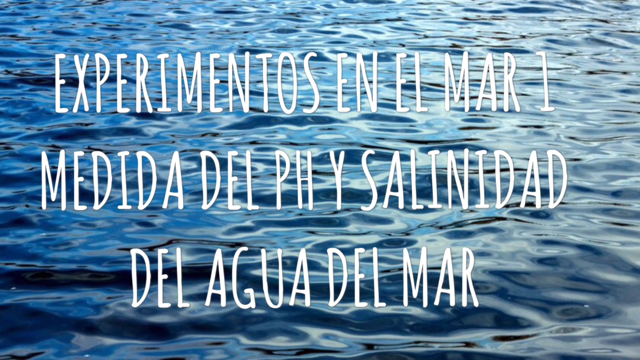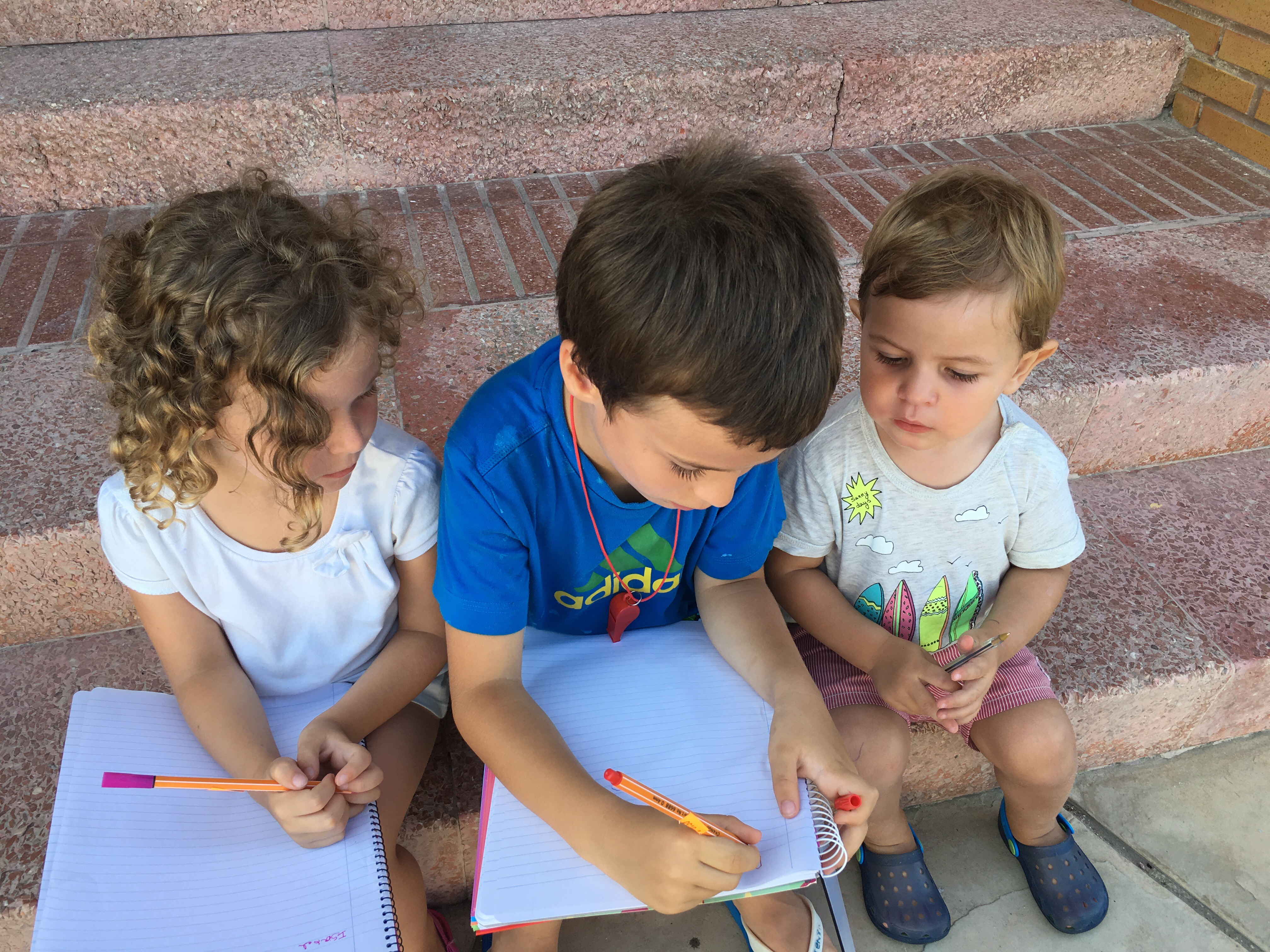PH AND SALINITY IN THE SEA EXPERIMENT SHEET
| Theme | pH, Salinity, Sea Water |
| Category | Scientific Experiments |
| Main product | Sea Water |
| Short description | In this experiment at sea we will measure and know the main values of the Seawater. We will compare them with the historical average values of the area where we take them and with the values that would be considered normal in the same areas. |

The ultimate goal is to know the main basic measurements of the sea, which will allow us to know the quality of the sea water. The more data we collect, the more we will be able to know about the sea, that is why we ask you to take part in complete this table. Log in and access to see what measures have already been taken.
| DATE | PROVINCE | BEACH | AMBIENT TEMPERATURE | DISTANCE TO THE COAST | DEPTH | WATER TEMPERATURE | PH | WATER SALINITY | COMMENTS |
MATERIALS WE WILL NEED
MATERIAL SUMMARY: For experiment you need: Thermometer, phmeter, TDS meter. You can also get them all together in a pack: buy pack. Below we explain each of the instruments in detail, and what you will need them for. You may also find it useful to download the table of measurementsor copy in a notebook the fields to be filled in.

MEASURES TO BE TAKEN
WHERE TO TAKE MEASUREMENTS
The best place to take measurements is 180-200 metres from the sand. If you are on a beach in Spain where there are yellow buoys, the ideal site would be at the height of the buoysThe measurements of the buoys are not modified by the buoys.
If you find it difficult to get 180 metres from the shore, take to the water as far away from the sand as possible. In any case, in the table you can indicate where the measure was taken.
Take 2 buckets of water 1 metre deep and cover the bucket as soon as you have taken them.
WATER SAMPLES
The more often you measure the better, but for the sake of measurement, measurements must be taken:
- Take water once a week.
- Each time the measurements are to be taken, 2 buckets should be taken and filled with water that is 1 metre deep.
- Below you will find the measurements to take. To take 1 measurement of each at the end the way to do it is: From the 2 buckets of water take 5 times the measurements of each one. Make the average of the 5 measurements. Then make the average of the average of the 2 buckets.
- CUBE 1: Measurement Cube 1 = (Measurement1 + Measurement2 + Measurement3+ Measurement4+ Measurement5)/5
- CUBE 2: Dimension Cube 2 = (Dimension1 + Dimension2 + Dimension3+ Dimension4+ Dimension5)/5
- FINAL MEASUREMENT = (Dimension Cube 1 + Dimension Cube 2)/2
We will indicate one by one the measures to be taken, explaining them as they appear in the measurement table.
ENVIRONMENTAL MEASURES
DATE, PROVINCE AND BEACH
The date is the date of measurement. Since the water temperature varies a lot depending on the season, it is important to know the date. The rest of the measurement values will also depend on the temperature. Also note down the province where you take the measurements 🙂 and the name of the beach.
AMBIENT TEMPERATURE
The temperature on the day you take the measurements.
DISTANCE TO SHORE AND DEPTH
At what distance do you take the measurements? Write the approximate value in the table. If it is close to the buoys, put 180-200 metres from the coast. If it is on the shore, make it approximate. The values near the sand are very modified by the effect of creams, (foot) etc.. of the people and therefore it is necessary to know if the measurements are taken near the shore, where you have to take into account these data.
In order to have uniformity in the measurements it is best to try to take the water at approximately 1 metre deep. In any case, if not, please indicate the measurement at which you have taken them.
MEASUREMENTS IN WATER
Let's look at how to take and what all the measures mean. In general, it is best to take the measurements as soon as possible, so that they do not change. The temperature, the evaporation of the water in the bucket, the dirt that may be attached to the water.
WATER TEMPERATURE
Use to measure: Thermometer.
How to measure temperature: Insert the thermometer into the water and leave it until the temperature stabilises. Note the temperature taken.
Comments: It is important to take this measurement when the water has just been drawn off, or directly by inserting the thermometer into the water in the measuring zone.
You know more about water temperature: See section water temperature
PH WATER
Use to measure: pH meter. You may not be familiar with pH. Here we tell you what is pH.
How to measure the pH of water: Once you have the pH meter the first step is to calibrate it. It is very simple and here you can see how to calibrate a digital phmeter. In this article you can see how to measure the pH of water. Here we show you on video.
Comments: Knowing how to measure pH, and having a device with which to measure pH, will help you in many, many applications. It is practically basic for any chemistry experiment to know how to measure pH. In addition, in seawater, the ph is a basic factor in determining the health of the water..
Learn more about pH: pH is a simple yet key term for many processes, especially important in the ocean. Read more about ph of seawater. Read more about the pH.
SALINITY IN WATER
Use to measure: Dissolved solids meter. The TDS meter is a simple device that directly gives us the value (in ppm) of the salinity conductivity. In this video you can see how to use it. Also the section water conductivity we explain it to you step by step. It is very simple!
Learn more about salinity:
We invite you to read more about the water salinitywater composition and seawater conductivity. These are the basic parameters to be able to move on to a more in-depth study of water composition.
HOW TO SUBMIT DATA
If you are encouraged to participate in the experiment with us, the most important part is to share the measurements you take! Also, your questions and comments will help us to better understand and understand the sea. There are several ways to submit your data. Here are some of them:
- Write them down, take a picture and upload it to the facebook page of experiments for children
- Send the data by email to experimentosninos@gmail.com
- Request to be part of the whatsapp group by sending your phone number to experimentosninos@gmail.com, you can also send your details in that group.
QUESTIONS AND COMMENTS
Do you have any questions, comments? Don't hesitate to leave them for me in the Experiments for Kids Facebook page or right here in comments. I respond to all comments!
DO YOU WANT TO BE NOTIFIED OF UPCOMING EXPERIMENTS IN THE WATER?
[contact-form-7 id="1322″ title="Your email SEA WATER"]

Hello good morning! My name is Carmen and I would like to know how I can measure the PH of a component that was made with honey and lemon, normally e echo them for spices chili tajines and things like that putting 10 g of chili and 90 of water, but already in only liquid as is the preparation mentioned there I do not know if also add the 90 of water or just 90 of honey prepared with lemon and other things thank you very much.